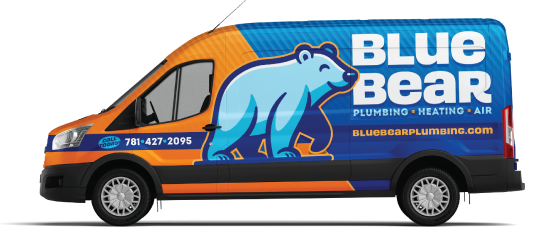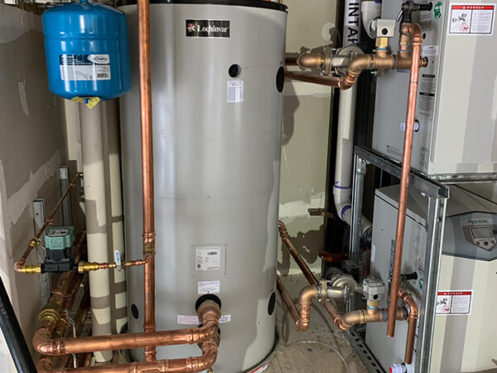All About Water Heaters: Types, Parts and How They work
Every home needs a water heater to warm up hot water whether it’s for the shower, sinks, or appliances in your home.
Learn the basics about how hot water enters the home in this article. We will cover the types and components of a water heater as well as how it works.
Types
Different types of water heaters use different types of fuel to heat water. In addition, not all waters will have the same parts.
Gas Water Heater
Gas water heaters are the most popular option as they offer high power, cost less, and are what most homeowners are used to.
You can get two types of gas water heaters: condensing water heater and non-condensing water heater.
Condensing water heaters utilize the heat generated by the unit to contribute to the water heating process, making them more efficient than non-condensing models. Furthermore, the gas they emit isn’t a high temperature, so you can use a less expensive PVC pipe for ventilation as opposed to metal piping required for non-condensing models.
Electric Water Heater
An electric water heater uses electricity instead of gas to heat the water. These options tend to be more efficient than gas models, and they are increasing in popularity over the years.
Tankless Water Heater
A tank-type water heater stores warm water in a tank until someone in the house requests it. Unfortunately, most tanks experience some amount of standby heat loss. When the heat escapes the tank, the water heater needs to heat the water again. When the water in the tank is used, everyone must wait for the water in the tank to heat up again.
Tankless water heaters provide water on-demand instead of storing it in a tank. These devices save space in small houses, and they never run out of hot water, assuming it produces adequate water flow to support each fixture’s needs. You can get either a gas tankless water heater or an electric tankless water heater.
Tankless models often require an expensive upgrade to the gas supply or circuit board, creating high installation costs. Once installed, a tankless water heater generates hot water at a much higher efficiency than a storage tank heater, saving money on utility bills each month.
Tankless water heaters usually last 20+ years while most tank-style water heaters only last 10 – 15 years.
Heat Pump Water Heater
A heat pump water heater, or hybrid water heater, uses heat from the area to heat the water it produces, in a similar fashion to a refrigerator. It produces efficiency rates similar to those of a tankless water heater if not better, but they also come with a higher initial cost.
Parts
A water heater has numerous components that work together to produce the hot water that flows out of your showerhead in the morning.
We will cover some of the most important components of your water heater.
Anode Rod
The anode rod in your water heater tank protects the tank from corrosion.
Sacrificial anode rods come in either magnesium, aluminum, or zinc. Magnesium anode rods work the best, but they cost the most and require frequent replacement. Zinc anode rods eliminate the rotten egg smell. Aluminum anode rods handle hard water conditions the best. You can also get a powered anode rod that doesn’t require regular replacement.
Thermocouple
Gas water heaters have a safety device known as a thermocouple that automatically turns the gas valve off if it notices a potential hazard.
If your pilot light constantly goes out after you light it, you may need to clean or replace the thermocouple, making it an important part for you to know in your water heater.
Drain Valve
The drain valve on the bottom of a water heater tank allows you to empty the tank.
You will want to empty the tank if you need to move it or work on it.
You will also open the drain valve about once a year to flush the tank as a part of your annual water heater maintenance.
Control Panel
Your water heater control panel is where you can check the temperature, change the temperature, and select the operating mode you prefer.
Some control panels have an easy-to-use digital display while others have an analog display.
How Water Heater Work
Cold water enters the water heater through the cold water supply.
In a tank-type water heater, a dip tube guides the water to the bottom of the water heater tank.
A thermostat recognizes the temperature of the incoming water when it doesn’t reach the temperature setting, causing it to notify the ignition. The ignition activates the gas burner or heating elements.
A gas burner heats the water directly, while heating elements in a heat exchanger transfer heat from hot coils to water indirectly.
Once the water reaches the correct temperature, the water heater sends the water to the desired fixture.
Buying the Right Water Heater
When looking to buy a water heater, it is important to get one that is the right size for your home. Doing so will ensure you have hot water available whenever you need it.
Size
If you opt for a tank-style water heater, you want to get a tank large enough to accommodate your needs without going overboard.
For residential use, most people choose between a 40-gallon tank, 50-gallon tank, 75-gallon tank, or 100-gallon tank.
Tankless water heaters rate water production using water flow in gallons per minute (GPM). The water flow must accommodate every single open faucet in the house. If the water heater doesn’t produce enough water flow, you may experience what’s known as a cold water sandwich where you won’t receive steady hot water.
To pick the right water heater size, consider your water usage during peak hours. For example, if two people shower in the morning, you need a device that will cover at least two showers at a time (and then some).
Easy Installation
A complicated installation can make a new, fancy water heater more effort than it’s worth for people who don’t plan to live in the house too much longer.
Look for a replacement water heater that will fit into your current setup. This means that it should be a similar size and, if gas, ventilate the same way.
Energy Efficiency
Water heaters come with an efficiency rating known as its Uniform Energy Factor (UEF). The higher the UEF, the more efficient the device. While it’s a good start to look for products with an Energy Star sticker, some devices will still be more efficient than others.
Condensing gas water heaters, electric tankless water heaters, and hybrid water heaters tend to have the best efficiency ratings.
Professional Water Heater Service
Blue Bear Plumbing, Heating & Air offers water heater services in Massachusetts from Boston to Cape Cod. Our technicians are trained in water heater repair, water heater maintenance, and water heater replacement on all types of water heaters, including tankless water heaters.
We also perform draining cleaning and plumbing services as well as HVAC services.
Contact Blue Bear Plumbing, Heating & Air to learn more!
Contact Us Today
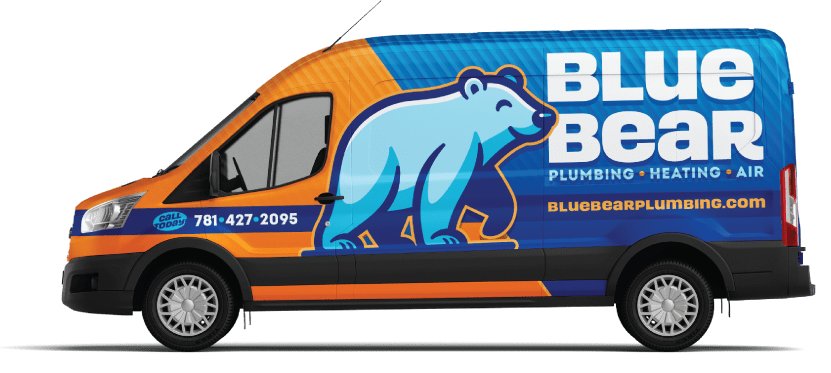
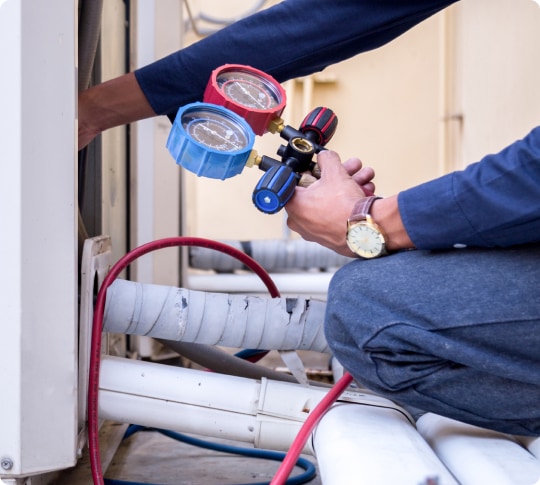
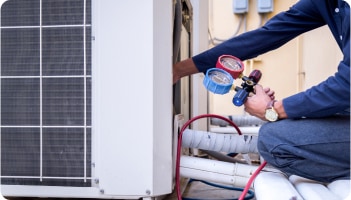
Routine maintenance is vital for the longevity of your plumbing, heating, and air conditioning systems. Sign up for our Blue Care Maintenance Plan for annual service and exclusive membership benefits, including:
- Priority scheduling
- Waived service fee during normal business hours
- 10% discount on service calls
- 3% discount on new installations
- Two-year parts and labor warranty on new equipment

